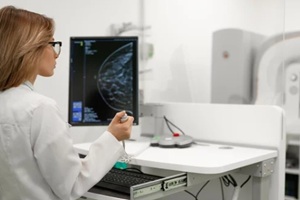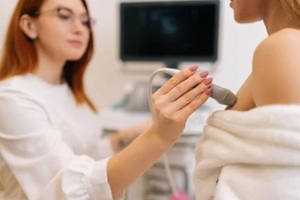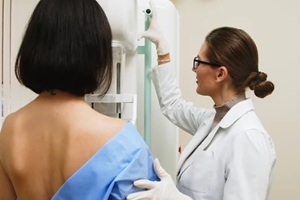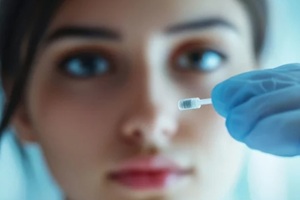 Starting around age 40, the American Cancer Society recommends women begin getting mammograms once a year. Mammograms are low-dose X-rays of the breast that can help detect breast cancer at an early age when treatment is most likely to be successful. If you’ve recently had a mammogram, you may be anxiously waiting for your results.
Starting around age 40, the American Cancer Society recommends women begin getting mammograms once a year. Mammograms are low-dose X-rays of the breast that can help detect breast cancer at an early age when treatment is most likely to be successful. If you’ve recently had a mammogram, you may be anxiously waiting for your results.
Knowing your mammogram results is just as important as the screening itself. When terms like “BI-RADS scores” and “follow-up imaging” come up in conversation, you may be confused about what it all means. By learning what different results indicate, you can take informed steps toward managing your breast health.
Find out what your mammogram results really mean, why these screenings are important for overall health, and when you should consult a specialist for further guidance.
The Mammogram Screening Process
A mammogram is a specialized X-ray imaging test used to examine breast tissue for early signs of cancer or other abnormalities. It is one of the most effective tools for detecting breast cancer in its earliest stages, often before a lump can be felt.
During a mammogram, a technologist positions your breast between two plates, which gently compresses the tissue to capture clear images. The process typically takes about 20 minutes, with the imaging itself lasting just a few seconds per breast.
Two main types of mammograms are used for screening and diagnosis. Screening mammography is performed on women with no symptoms as part of routine breast cancer screening. Diagnostic mammograms are recommended when a suspicious finding occurs during a screening or when a woman has symptoms, such as a lump.
Breaking Down BI-RADS Scores
The Breast Imaging Reporting and Data System (BI-RADS) is a standardized classification system developed by the American College of Radiology to help interpret and report mammogram results. Each mammogram is assigned a BI-RADS score ranging from 0 to 6 and includes:
- BI-RADS 0 – Incomplete. This score typically indicates that additional imaging is needed, such as additional mammogram images or an ultrasound or MRI.
- BI-RADS 1 – Normal. A score of 1 means no signs of cancer or abnormalities were found.
- BI-RADS 2 – Benign Findings. This is a non-cancerous result that involves benign conditions, such as cysts, calcifications, or fibroadenomas.
- BI-RADS 3 – Probably Benign. This finding indicates a low likelihood (less than 2%) of cancer, and a short-term follow-up is recommended.
- BI-RADS 4 – Suspicious Abnormality. A score of 4 means that the finding was concerning but is not definitive of cancer, and a biopsy may be needed.
- BI-RADS 5 – Highly Suggestive of Malignancy. This indicates a greater than 95% chance that the abnormality is cancerous. An immediate biopsy is recommended.
- BI-RADS 6 – Known Cancer Diagnosis. This category is for patients who have already been diagnosed with breast cancer through a prior biopsy.
Common Concerns and Misconceptions
 Many women worry when they receive BI-RADS results that indicate something may be wrong. However, this doesn’t necessarily mean cancer. Differences in breast density can affect the results of the screening. For example, dense breast tissue can make it harder to find abnormalities on a standard mammogram.
Many women worry when they receive BI-RADS results that indicate something may be wrong. However, this doesn’t necessarily mean cancer. Differences in breast density can affect the results of the screening. For example, dense breast tissue can make it harder to find abnormalities on a standard mammogram.
Women with dense breasts may benefit from an ultrasound or MRI for clearer imaging. When more detailed images of the breast are needed, 3D mammography is often recommended.
The Genius 3D Mammography exam is the latest advancement in breast cancer screening, providing a more accurate screening compared to traditional 2D mammograms. What makes The Genius 3D test unique is that doctors can view breast tissue layer by layer to find abnormalities that may be hidden in flat 2D images.
The Importance of Regular Screenings
Regular mammograms help detect breast cancer early when treatment is most effective. You can also support breast health by maintaining a healthy weight, exercising, eating a balanced diet, limiting alcohol, and avoiding smoking. Being proactive with screenings and self-awareness empowers women to take control of their health and well-being.
When to Consult a Specialist
Seek an immediate follow-up with your provider if you notice any concerning symptoms, such as a new lump, nipple discharge (especially bloody), persistent breast pain, skin changes (redness or dimpling), or swelling. If your mammogram results are unclear, don’t hesitate to ask questions or request clarification.
Advocate for your health by discussing family history, risk factors, and additional imaging options when needed. If recommended for a biopsy, understand the procedure and results thoroughly. Trusting your instincts and working with a specialist can get you the best care and a personalized approach to your breast health.
Call Raleigh Gynecology & Wellness Today

Staying proactive leads to early detection and better outcomes in breast health. Regular breast cancer screenings, along with a healthy lifestyle, can make a significant difference in managing your well-being.
At Raleigh Gynecology & Wellness, we are committed to supporting women through every step of their screening and follow-up journey. Whether you need a mammogram, further testing, or guidance, our team is here to help. Schedule an appointment today to take charge of your breast health or contact us to learn more about our services.


 Breast MRIs can be especially useful for finding small or hidden tumors that might be overlooked on a mammogram, especially those in dense breast tissue. They can also be used to evaluate the extent of cancer in patients who have already been diagnosed.
Breast MRIs can be especially useful for finding small or hidden tumors that might be overlooked on a mammogram, especially those in dense breast tissue. They can also be used to evaluate the extent of cancer in patients who have already been diagnosed. Caring for your
Caring for your 
 Mood changes
Mood changes Choosing (and using)
Choosing (and using)  Many factors, such as dietary habits and exposure to harmful substances, impact the
Many factors, such as dietary habits and exposure to harmful substances, impact the  Genetic counseling is available for those who have been deemed high-risk due to their family history. Doctors still cannot test for every factor that contributes to an increased risk of cancer, but several genes have been identified that can contribute to
Genetic counseling is available for those who have been deemed high-risk due to their family history. Doctors still cannot test for every factor that contributes to an increased risk of cancer, but several genes have been identified that can contribute to 
 When the time isn’t right to start or grow your family, birth control offers a reliable and convenient way to manage your contraceptive care. Although several choices are available, two of the most common
When the time isn’t right to start or grow your family, birth control offers a reliable and convenient way to manage your contraceptive care. Although several choices are available, two of the most common  The birth control implant is a long-acting, reversible contraceptive that provides years of highly effective pregnancy prevention. It’s a tiny, flexible rod measuring approximately 1.6 inches and is inserted just under the skin of the upper arm.
The birth control implant is a long-acting, reversible contraceptive that provides years of highly effective pregnancy prevention. It’s a tiny, flexible rod measuring approximately 1.6 inches and is inserted just under the skin of the upper arm. Both the birth control shot and the implant offer highly effective, long-term contraception, but the right choice depends on your individual needs and lifestyle. While the shot provides flexibility with regular injections, the implant offers years of hassle-free protection. By knowing the pros and cons of each method you can make an informed decision about your contraceptive care.
Both the birth control shot and the implant offer highly effective, long-term contraception, but the right choice depends on your individual needs and lifestyle. While the shot provides flexibility with regular injections, the implant offers years of hassle-free protection. By knowing the pros and cons of each method you can make an informed decision about your contraceptive care.